The Special Operations Executive (SOE) was a secret British World War II organisation. It was officially formed on 22 July 1940 under Minister of Economic Warfare, Hugh Dalton, by the amalgamation of three existing secret organisations. Its purpose was to conduct espionage, sabotage and reconnaissance in occupied Europe against the Axis powers, and to aid local resistance movements.

The Home Guard was an armed citizen militia supporting the British Army during the Second World War. Operational from 1940 to 1944, the Home Guard had 1.5 million local volunteers otherwise ineligible for military service, such as those who were too young or too old to join the regular armed services and those in reserved occupations. Excluding those already in the armed services, the civilian police or civil defence, approximately one in five men were volunteers. Their role was to act as a secondary defence force in case of invasion by the forces of Nazi Germany.

Major-General Sir Colin McVean Gubbins, was the prime mover of the Special Operations Executive (SOE) in the Second World War.

The Danish Home Guard (HJV) is the fourth service of the Danish Armed Forces. It was formerly concerned only with the defence of Danish territory, but since 2008, it has also supported the Danish military efforts in Afghanistan and Kosovo. The Danish Home Guard has also provided training to Ukrainian soldiers in Ukraine, prior to the Russian invasion of Ukraine. Service is voluntary and unpaid, though members' loss of income from time taken off work, transport expenses and other basic expenses are compensated. However, workshop and depot staff plus clerks and senior officers are all paid. The unarmed Women's Army Corps (Lottekorpset) was merged in 1989 with the then all-male Home Guard to form the present, armed unisex Home Guard.
Operation Gladio was the codename for clandestine "stay-behind" operations of armed resistance that were organized by the Western Union (WU), and subsequently by NATO and by the CIA, in collaboration with several European intelligence agencies during the Cold War. Although Gladio specifically refers to the Italian branch of the NATO stay-behind organizations, Operation Gladio is used as an informal name for all of them. Stay-behind operations were prepared in many NATO member countries, and in some neutral countries.
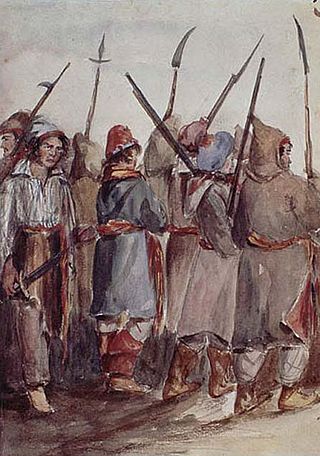
Irregular military is any non-standard military component that is distinct from a country's national armed forces. Being defined by exclusion, there is significant variance in what comes under the term. It can refer to the type of military organization, or to the type of tactics used. An irregular military organization is one which is not part of the regular army organization. Without standard military unit organization, various more general names are often used; such organizations may be called a troop, group, unit, column, band, or force. Irregulars are soldiers or warriors that are members of these organizations, or are members of special military units that employ irregular military tactics. This also applies to irregular infantry and irregular cavalry units.
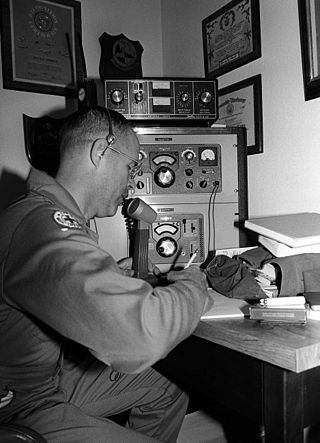
Auxiliaries are support personnel that assist the military or police but are organised differently from regular forces. Auxiliary may be military volunteers undertaking support functions or performing certain duties such as garrison troops, usually on a part-time basis. Unlike a military reserve force, an auxiliary force does not necessarily have the same degree of training or ranking structure as regular soldiers, and it may or may not be integrated into a fighting force. Some auxiliaries, however, are militias composed of former active duty military personnel and actually have better training and combat experience than their regular counterparts.

Sissi is a Finnish term for light infantry which conducts reconnaissance, sabotage and guerrilla warfare operations behind enemy lines. The word sissi, first attested in the modern meaning "patrolman, partisan, spy" in 1787, comes to Finnish from Slavic and refers either to a forest bandit or his yew bow.
A stay-behind operation is one where a country emplaces secret operatives or organizations in its own territory, for use in case of a later enemy occupation. The stay-behind operatives would then form the basis of a resistance movement, and act as spies from behind enemy lines. Small-scale operations may cover discrete areas, but larger stay-behind operations envisage reacting to the conquest of whole countries.
During World War II, resistance movement occurred in German-occupied Europe by a variety of means, ranging from non-cooperation to propaganda, hiding crashed pilots and even to outright warfare and the recapturing of towns. In many countries, resistance movements were sometimes also referred to as The Underground. The resistance movements in World War II can be broken down into two primary politically polarized camps: the internationalist and usually Communist Party-led anti-fascist resistance that existed in nearly every country in the world; and the various nationalist groups in German- or Soviet-occupied countries, such as the Republic of Poland, that opposed both Nazi Germany and the Communists.
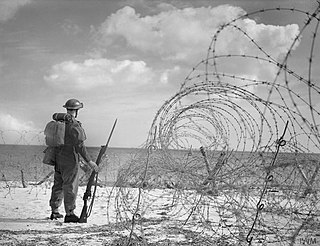
British anti-invasion preparations of the Second World War entailed a large-scale division of military and civilian mobilisation in response to the threat of invasion by German armed forces in 1940 and 1941. The British Army needed to recover from the defeat of the British Expeditionary Force in France, and 1.5 million men were enrolled as part-time soldiers in the Home Guard. The rapid construction of field fortifications transformed much of the United Kingdom, especially southern England, into a prepared battlefield. Sea Lion was never taken beyond the preliminary assembly of forces. Today, little remains of Britain's anti-invasion preparations, although reinforced concrete structures such as pillboxes and anti-tank cubes can still be commonly found, particularly in the coastal counties.
Projekt-26, best known as P-26, was a stay-behind army in Switzerland charged with countering a possible invasion of the country. The existence of P-26 as secret intelligence agencies dissimulated in the military intelligence agency (UNA) was revealed in November 1990 by the PUK EMD Parliamentary Commission headed by senator Carlo Schmid. The commission, whose initial aim was to investigate the alleged presence of secret files on citizens constituted in the Swiss Ministry of Defence, was created in March 1990 in the wake of the Fichenaffäre or Secret Files Scandal, during which it had been discovered that the federal police, BUPO, had maintained files on 900,000 persons.
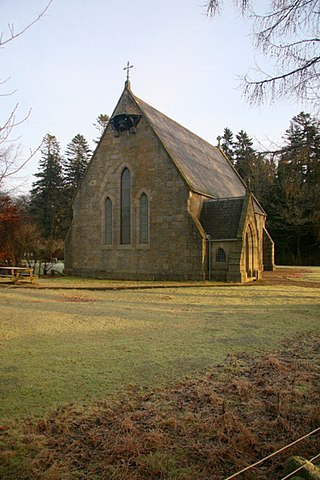
Tarfside is a small hamlet in Angus, Scotland. It is situated in Glen Esk, on the upper course of the River North Esk, around 8 miles north of Edzell, and has a footpath to nearby Loch Lee. Tarfside is commonly seen as a very beautiful place for walkers.

The Malayan Peoples' Anti-Japanese Army (MPAJA) was a communist guerrilla army that resisted the Japanese occupation of Malaya from 1941 to 1945. Composed mainly of ethnic Chinese guerrilla fighters, the MPAJA was the largest anti-Japanese resistance group in Malaya. Founded during the Japanese invasion of Malaya, the MPAJA was conceived as a part of a combined effort by the Malayan Communist Party (MCP) and the British colonial government, alongside various smaller groups to resist the Japanese occupation. Although the MPAJA and the MCP were officially different organisations, many saw the MPAJA as a de facto armed wing of the MCP due to its leadership being staffed by mostly ethnic Chinese communists. Many of the ex-guerrillas of the MPAJA would later form the Malayan National Liberation Army (MNLA) and resist a return to pre-war the normality of British rule of Malaya during the Malayan Emergency (1948–1960).
Coleshill Auxiliary Research Team (CART) is a network of British historians. It is named after Coleshill in Oxfordshire where Winston Churchill had arranged for groups of soldiers, called Auxiliary Units, to develop and be trained in guerrilla war tactics for use in the event of a Nazi invasion of England during World War II. CART is the largest group in the UK researching this force and have put together a national database listing the 3,500 men.
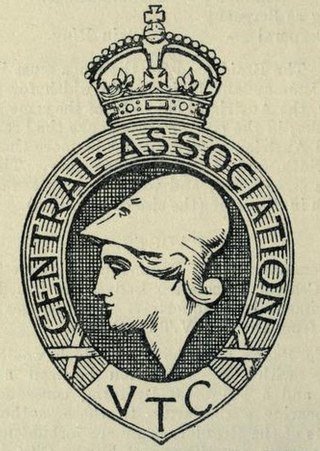
The Volunteer Training Corps was a voluntary home defence reserve force in the United Kingdom during World War I.
The National Reserve was created in 1910 as a means of retaining the option to call on the services of ex-military personnel to augment the regular and auxiliary military forces of the United Kingdom in the event of a major war. At its inception it was little more than a register of men with previous military experience who would be willing to return to arms should their services be required. The government refused to grant the reserve any funding, and until three weeks after the start of the First World War, could not definitively say how it would be used. On the outbreak of the war, many of the younger, fitter reservists re-enlisted in the British Army or Territorial Force on their own initiative, without waiting to be called up. When the reserve was finally called to duty, it was used to augment the home defence forces in the guarding of key installations and infrastructure. The older reservists, considered unfit for more active duties, played a leading role in the creation of the Volunteer Training Corps, a civilian auxiliary recruited from those ineligible for military service, largely on account of age. The introduction of conscription early in 1916 resulted in the younger reservists being called up for service in the army. The remaining reservists were transferred into the Royal Defence Corps, established in March 1916 as part of the re-organisation of the home defence forces, and the National Reserve effectively ceased to exist as a distinct organisation.
The British home army in the First World War served the dual purpose of defending the country against invasion and training reinforcements for the army overseas. Initial responsibility for defending the nation lay with the Territorial Force, a part-time auxiliary designed in 1908 as a means of expanding the army in a major foreign conflict but, as a result of political compromise, implemented as a home defence army. It was supported in this role by 42,000 regular army troops, primarily belonging to the Royal Garrison Artillery and the Royal Engineers. The 14 infantry divisions and 14 mounted brigades of the Territorial Force were mainly allocated either to the Local Force, stationed near the coast and tasked with disrupting an invasion at the point of landing, or the Central Force, a mobile element tasked with defeating the invading force as it marched on London. The Local Force was augmented by units of the Special Reserve and Extra Reserve, which were the third battalions of the regular army line infantry regiments established to recruit and train replacements for their regiments' two combat battalions. The home army was also largely responsible for guarding vulnerable points, such as the communications infrastructure, rail network and munitions works.
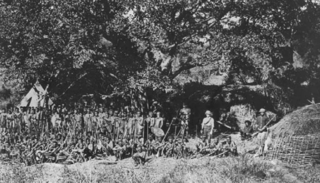
The Natal Border Guard was an auxiliary force levied for the defence of the Colony of Natal during the Anglo-Zulu War of 1879. British military commander Lord Chelmsford had intended to raise a large auxiliary force to support his invasion of the Zulu Kingdom but was opposed by the civilian government of the Colony of Natal, led by its governor Henry Ernest Gascoyne Bulwer, who would have to finance the unit. Bulwer eventually allowed a smaller force to be raised with the stipulation that it not be deployed outside of Natal. This unit was to serve only on a part-time basis, receive no training and fight with the traditional weapons of spear and shield.

Scallywag bunkers or Auxiliary Unit Operational Base/OB were underground bunkers used by GHQ Auxiliary Units of the British Resistance against axis invasion of the United Kingdom.













